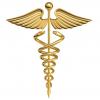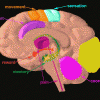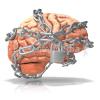Yeah I happened to come across this when searching for information on ginkgo, your title grabbed me in and I have read every post so far. I was wondering what your current stack is since its been close to a month since your last post.
Hey All,
Sorry for my lack of activity on here recently. Things in school/life have become increasingly busy recently, and I've had no time at all. That being said... I'm on the home stretch to board-studying, and then the board exams themselves in just a few months, so my activity on here will probably be even less until July-- however, I will try to respond when I can. As a side note, I've also been getting a lot of private messages asking for medical advice or personal advice about stacks. Unfortunately, my schedule has become so busy that I simply don't have time to answer them all. Additionally, I'm still just a medical student, and I shouldn't be giving out medical advice in general, especially with people I haven't been able to take a full history and perform a physical on. If you have a health concern, you should see your doctor. Simple as that. Sorry!
Currently, I'm doing pretty great. I've tried a few things in the last month or so.
Last I posted, I was trying out Panax Ginseng, Phosphatidylserine, and Lion's Mane Mushroom along with other items traditional to my stack. I also spoke of potentially stopping Piracetam, simply to see what would happen. These are the results:
Ginseng -- was great, and did act as a good stimulant and study aid. I would continue using it if there were no side effects, however; after further reading and research, I became increasingly concerned about long-term use. After about 3 weeks of positive results in focus and motivation, I discontinued use. The primary side effects I'm concerned about involve the hormonal axis, as Ginseng has been shown to be a reasonably potent phytoestrogen, and could have estrogenic effects long term. Currently the natural medicine community does not feel it is safe to take long term, and I will heed their advice in this. As Ginseng was primarily a very balanced stimulant for me, and didn't seem to drastically improve my memory or anything else to remarkable-- it's basically redundant with caffeine for me. I will probably continue to use it sporadically-- it's wonderful for a long day of physical activity (i.e. Skiing, a long bike ride, running, etc.) Also of note, you'll find this supplement in remarkably high doses in several energy drinks. Some varieties of Monster Energy Drink, for example, have about 2x the dose I was taking in their large screw-top cans. This was something I had to be a bit careful with because I didn't wanna have huge unintentional megadoses of it in my diet.
CDP-Choline (citicoline) -- After further reading, I also found this supplement to have some preliminary evidence of increasing hormonal axis activity (HPA-Axis). While Ginseng acts as an estrogen directly, this acts to basically amp up all the release signals for all hormones. When I take CDP choline, I can definitely feel the ACTH side of things; i.e. catacholamine boost, which is likely increased epinephrine and norepi. (adrenaline, noradren.), but I'm sure my cortisol is probably also boosted way up too. There simply isn't enough research out there in the community to draw a conclusion about safety in this regard with CDP Choline. High sustained cortisol is definitely not a good thing... You can read all about the monkeys tested in sustained high stress situations. You'll find elevated cortisol levels, premature aging, and early death from cardiovascular complications. Not something I really want! Since CDP-Choline has a HUGE half-life (72 hours), I have stepped this back to once every 3 days. I still get a good benefit from it this way, but it's not acting quite like the stimulant I once experienced it as. Again, this is a reduction in use due to my concerns about long term safety, not lack of efficacy.
Phosphatidylserine -- The research from this is very promising. The safety profile looks great. Only problem is, I've been taking it for a month, and I don't notice any difference at all. Really, as I mentioned before, it's the kind of supplement that should act as a "support." But I had figured that after a month I might notice something. I'll continue to take it, just no exciting news to report. It may be more beneficial in situations with true, widespread neuron damage, like Alzheimer's, stroke, etc.
Lion's Mane Mushroom -- This stuff was interesting. It's very had to find much research at all regarding it, but the results seem to suggest a significant boost in NGF and BDNF (hormones that urge your neurons to grow and differentiate.) When I take it, I actually feel it a bit harder to focus and perform, but what I do notice is an increased quantity of memory retention from what I do study... It does not help with my rote recall or testing performance, and may actually hinder that. It just seems to help with memory formation, and after it wears off, I find myself holding on to a bit more than usual. I just find the process of studying while on it a bit more frustrating than usual because it's harder to focus. This will basically work for me in the 3-4 day period in the weekend before and early-week before an exam when I'm trying to swallow a ton of complex information, often for the first time. Due to a lack of long term safety information out there, I will not take it regularly, but simply as needed for large, low-pressure, non-performance oriented study sessions. (AKA, I'll take while watching lectures and reading, but not while trying to blast through sample questions and question banks or having comprehensive discussions with classmates.)
Piracetam Reduction -- I've read all the horror stories some people have posted up about withdrawal from Piracetam, etc. They are few and far between, but it was a concern of mine. I also wanted try out stopping piracetam, because even though I was at reasonably high doses, I felt like I was getting a differential tolerance to it. By differential tolerance, I mean that basically I felt I was losing the nootropic effects from it at the same dose, but retaining strong anxiolytic effects from it. This is a topic you can read about else where in these forums, but basically Piracetam appears to act on Glutamate channels to improve focus, memory, and increase brain activity. But it also seems to work on GABA channels to induce relaxation and reduce anxiety. (Piracetam is an derivative of the GABA molecule, so this makes sense.) Basically, I was taking my normal morning dose, but getting kinda sleepy from it. Feeling very relaxed and confident, but not quite reaching the same level of performance I had grown accustom to. So I quit COLD TURKEY. I was surprised by the results. I had ZERO withdrawal, and no negative effects whatsoever. For 2-3 days after removing it entirely from my stack, I actually felt a slight increase in focus and mental capacity. This very slowly and gracefully faded away, and I returned to what must be my normal base line. The transition was very smooth, and not in any way unpleasant. After about a week off piracetam altogether I felt a very subtle decrease in my memory and cognitive performance, but it was manageable and not unexpected. After about 3 weeks off, I decided to try an 800mg dose of Piracetam in the morning, and I was shocked. It kicked like a mule this time. I was WAY in the zone, even without the normal preload that I required the first time I tried Piracetam. Basically, I was much more acutely aware of somewhat lower mental performance in the preceding weeks once I started back onto it, as compared to how I observed my differential in performance as I stopped using it from a period of about 3-4 months of being continuously on it. Eye of the beholder? Who knows. Again, this is all subjective and anecdotal, but that's how it went for me. This has led me to a conclusion about how I want to manage my piracetam. Over the last weeks since I tried it again, I've been trying to find an even lower minimum dose. I do get some benefit out of about 400mg once per day with breakfast, so this is what I'm going to do: I will take Piracetam in low doses when I have a moderately challenging day, but I will not take it regularly-- aka every day. THEN, on exam weeks, I will take the normal 800mg twice daily, ramping up the regimen through the exam. Then stop cold, and return to 400mg as needed. Piracetam has been wonderful supplement for me, but I want to make sure I'm getting the absolute top performance out of it, and this seems like a decent plan for that. That said, my stack will become very complicated.
-------------------------------------------------------
This is where I'm at now:
A Normal Day:
AM--
Caffeine (cup of Spark-- 500mg Choline bitartrate, tyrosine, and other multivitamins)
Fish Oil 1200mg
Ginkgo 120mg extended release
Phosphatidylserine 100mg
Afternoon--
Caffeine
Choline bitartrate 500mg
-----------------------------------------
A Tough Day:
AM--
Caffeine (cup of Spark-- 500mg Choline bitartrate, tyrosine, and other multivitamins)
Fish Oil 1200mg
Ginkgo 120mg extended release
Phosphatidylserine 100mg
400mg Piracetam
Afternoon--
Caffeine
Choline bitartrate 500mg
400-800mg Piracetam (variable depending on how tough a day)
--------------------------------------------
Every 3 Days:
CDP-Choline 100mg
--------------------------------------------
Early Test Week:
AM--
Caffeine (cup of Spark-- 500mg Choline bitartrate, tyrosine, and other multivitamins)
Fish Oil 1200mg
Ginkgo 120mg extended release
Phosphatidylserine 100mg
800mg Piracetam
Lion's Mane Mushroom
Afternoon--
Caffeine
Ginkgo 120mg XR
Choline bitartrate 500mg
800mg Piracetam
--------------------------------------------
Late Test Week:
AM--
Caffeine (cup of Spark-- 500mg Choline bitartrate, tyrosine, and other multivitamins)
Fish Oil 1200mg
Ginkgo 120mg extended release
Phosphatidylserine 100mg
1200mg Piracetam
Afternoon--
Caffeine
Ginkgo 120mg XR
Choline bitartrate 500mg
800mg Piracetam
---------------------------------------------
Test Day:
AM--
Caffeine (cup of Spark-- 500mg Choline bitartrate, tyrosine, and other multivitamins)
Fish Oil 1200mg
Ginkgo 120mg extended release
Phosphatidylserine 100mg
1200mg Piracetam
During Exam--
1600mg Piracetam
500mg Choline bitartrate
700mg Oxiracetam (have to be careful here, once this seemed like too much stimulation and shattered my focus for part of an exam.)
(Depending on how long after breakfast my exam is, I may also take a second Ginkgo XR 120mg)
----------------------------------------------
As you can see, I've cut out many things from the past, and I'm still striving for a bit of a minimalist approach compared to some of the stacks out there. Some of the things I've mentioned in the past on this thread are still something I try every once in a while. Like Noopept, for example: I find it does help with studying, in a very similar way to Lion's Mane Mushroom, so sometimes I will take one of those. Or Oxiracetam-- for me, it's a powerful, stimulating nootropic, and if I'm just having a rough day getting my study on, I might use one of those. The key is really being able to read you body, and know what supplement might be worthwhile to take as needed. This is not something everyone could/should try, for some it's likely best to stick to a schedule. Regardless, my priority is safety and sustained performance. Recently, I've been very concerned about burnout and reduced supplement efficacy, and I'm simply trying to keep my eyes on the prize (which is the looming board exam). It will be about 4 more months, but this will be the time when I need the absolute highest, sustained, day-long performance. Hopefully I'll have a Boards Day stack planned out well in advance to share with you guys, but if things continue to be as busy as they have been, I can't guarantee anything.
Hope everyone is doing well! Take care, and noop safely!















































